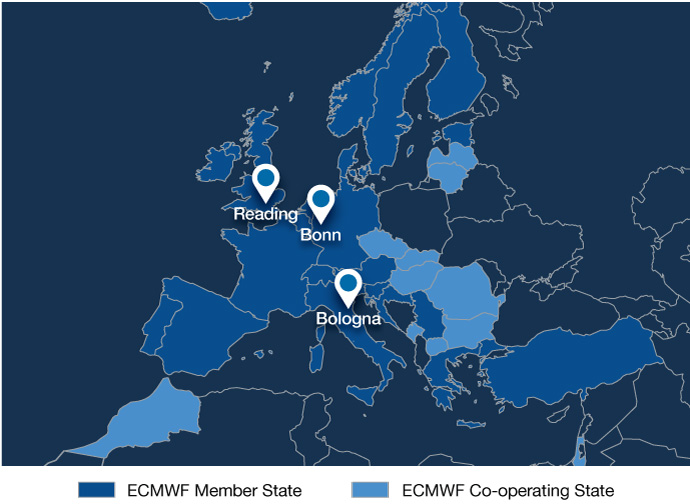ECMWF has officially become a multi-site organisation after the opening ceremonies for offices in Bonn, Germany, on 13 September and its data centre in Bologna, Italy, on 14 September 2021. This marks an exciting new phase for ECMWF, strengthening ties with its Member States through new locations in Europe in addition to its existing UK headquarters, and the first step towards upgrading its already worldclass supercomputing capability to advance its forecasts.

Bonn
Following an international tender amongst its Member States, ECMWF opened a site in Bonn, a city already known as home to several international and intergovernmental organisations. The focus in Bonn is work conducted in partnership with the European Union (EU), including the Copernicus Earth observation programme and the planned Destination Earth initiative. The location in Bonn also enables further collaboration with scientific institutions across Germany and the region, and closer connection with ECMWF Member States. In particular, ECMWF will collaborate with the Center for Earth System Observations and Computational analysis (CESOC), which integrates research at the Universities of Bonn and Cologne as well as the Forschungszentrum Jülich. From 2022, a visiting scientist programme, targeting activities in Bonn, will also begin. The ECMWF flag will fly outside the Ministry for the Environment, Nature Conservation and Nuclear Safety (BMU) headquarters, the organisation’s new home before it transfers to a brand-new building in 2026.
Bologna
ECMWF’s data centre in Bologna houses the Centre’s new Atos BullSequana supercomputer system, scheduled to begin running operationally in 2022. The new system will increase sustained performance by a factor of about five compared to ECMWF’s current high-performance computing facility. It provides the flexibility to accommodate the latest technologies in supercomputing. It will also facilitate the continuation of investigative work into the field of machine learning in numerical weather prediction, as well as the use of advanced high-performance computing, big data and AI methodologies to create a digital twin of the Earth with a breakthrough in realism. The data centre is on the site of the Tecnopolo di Bologna campus, which is redeveloping the unused buildings and grounds of a former tobacco factory.

